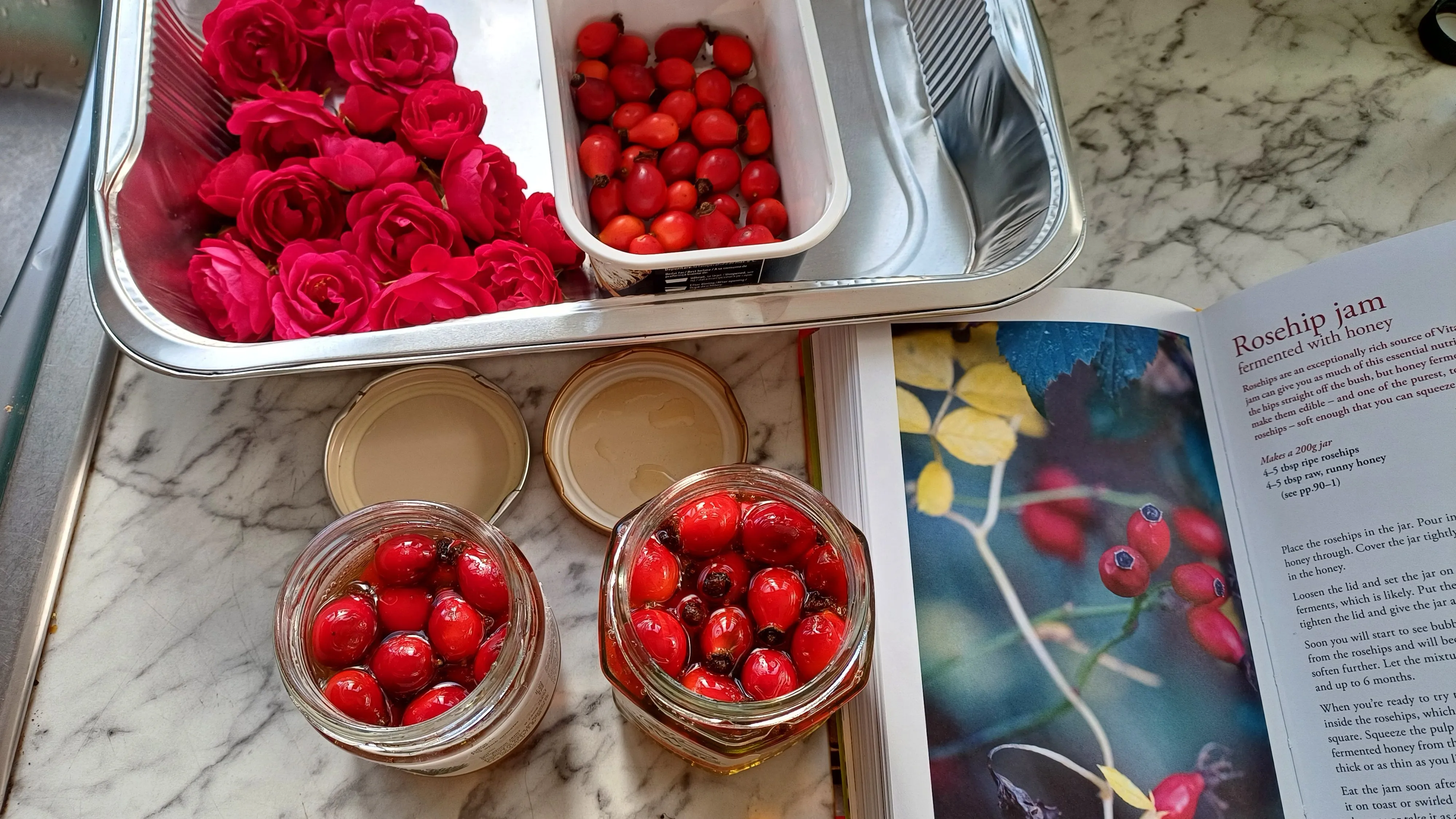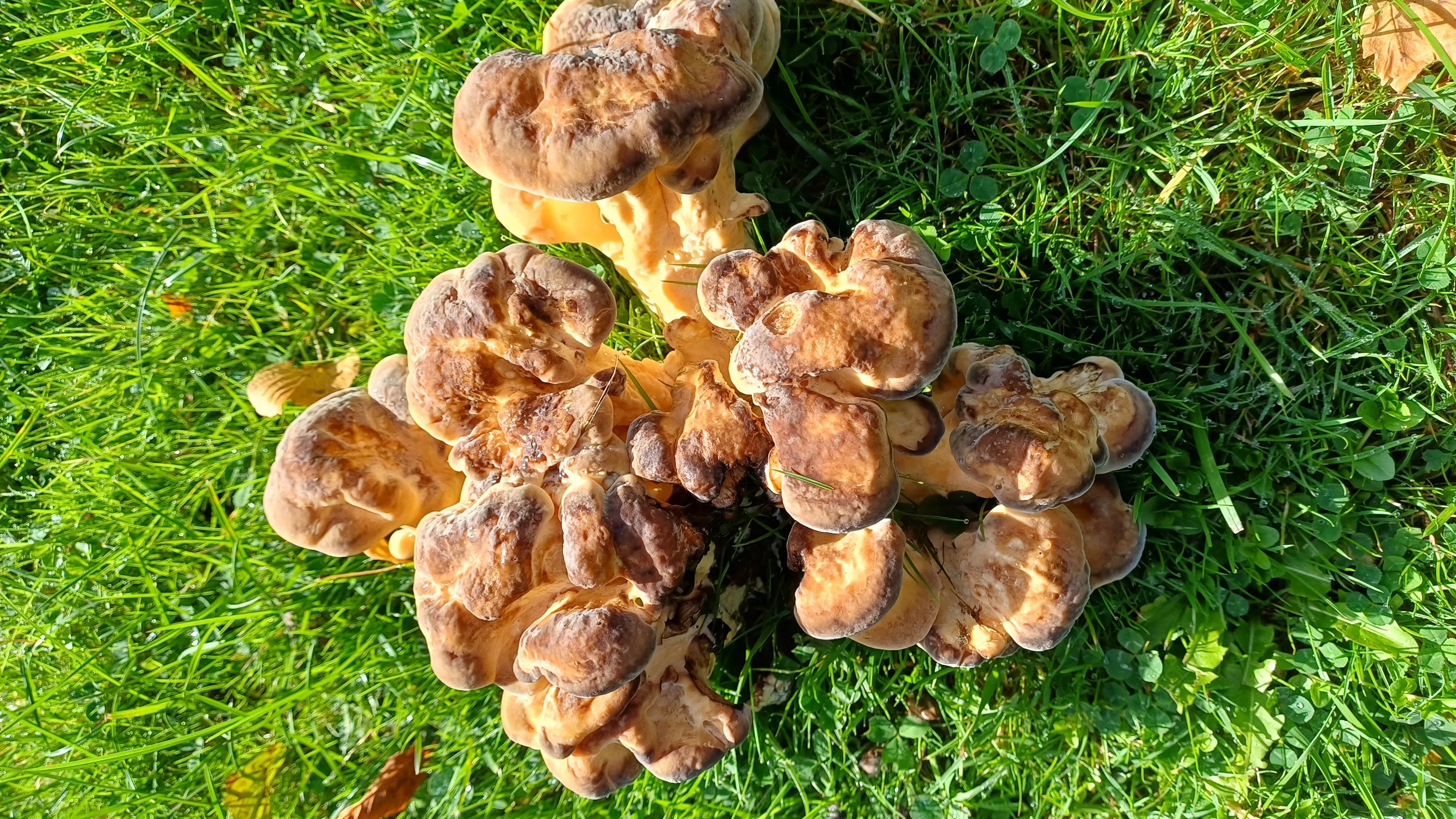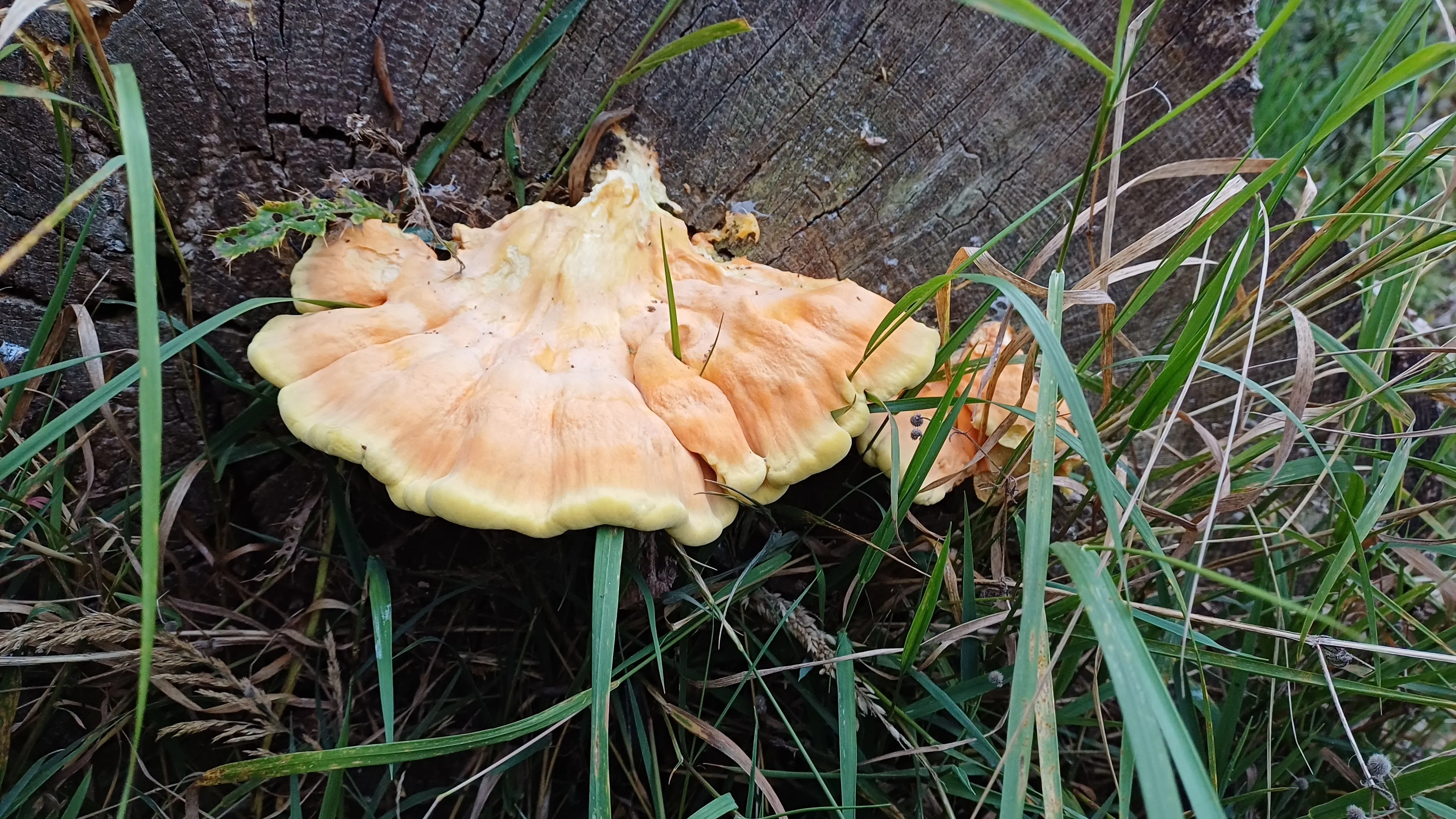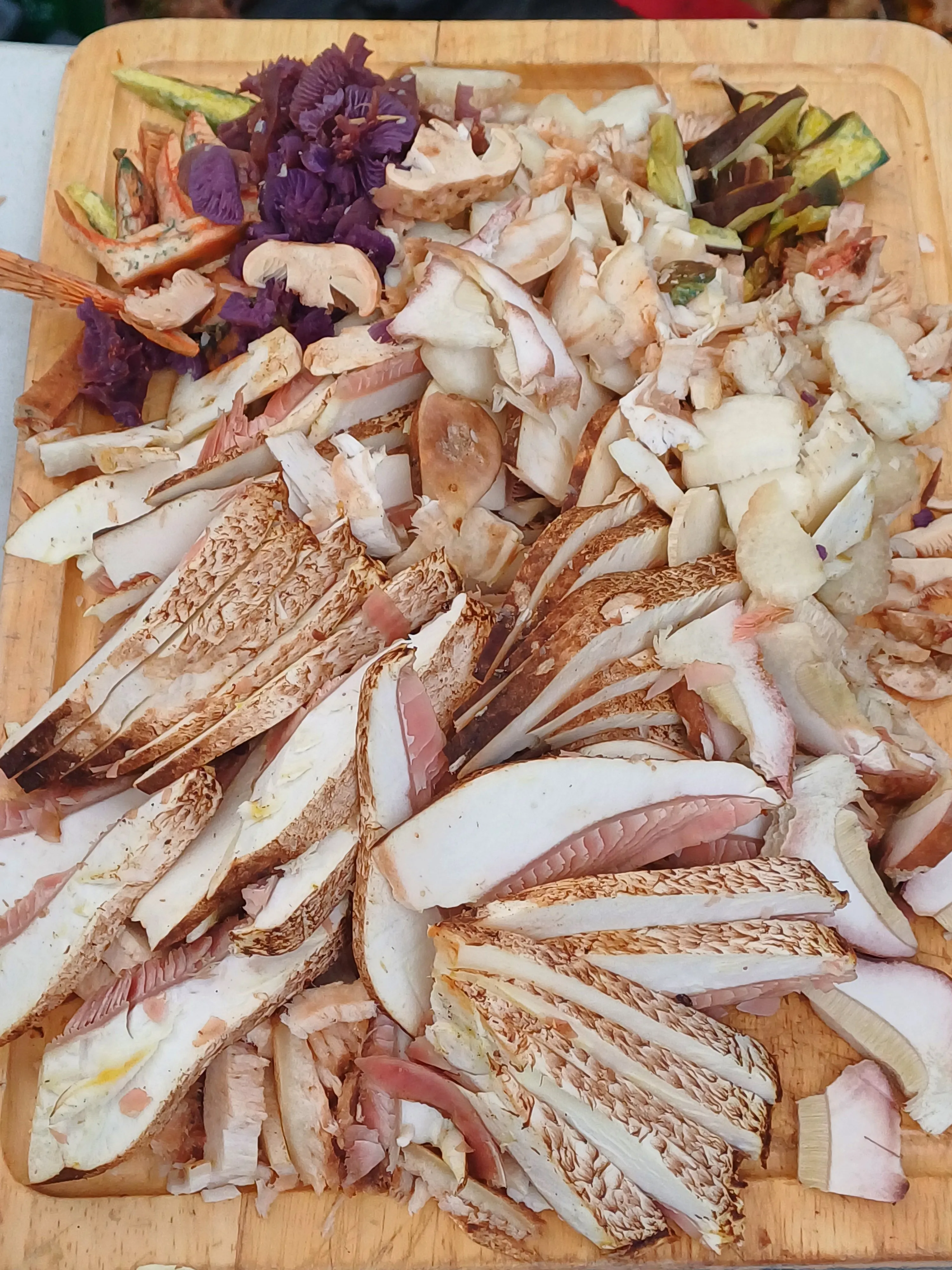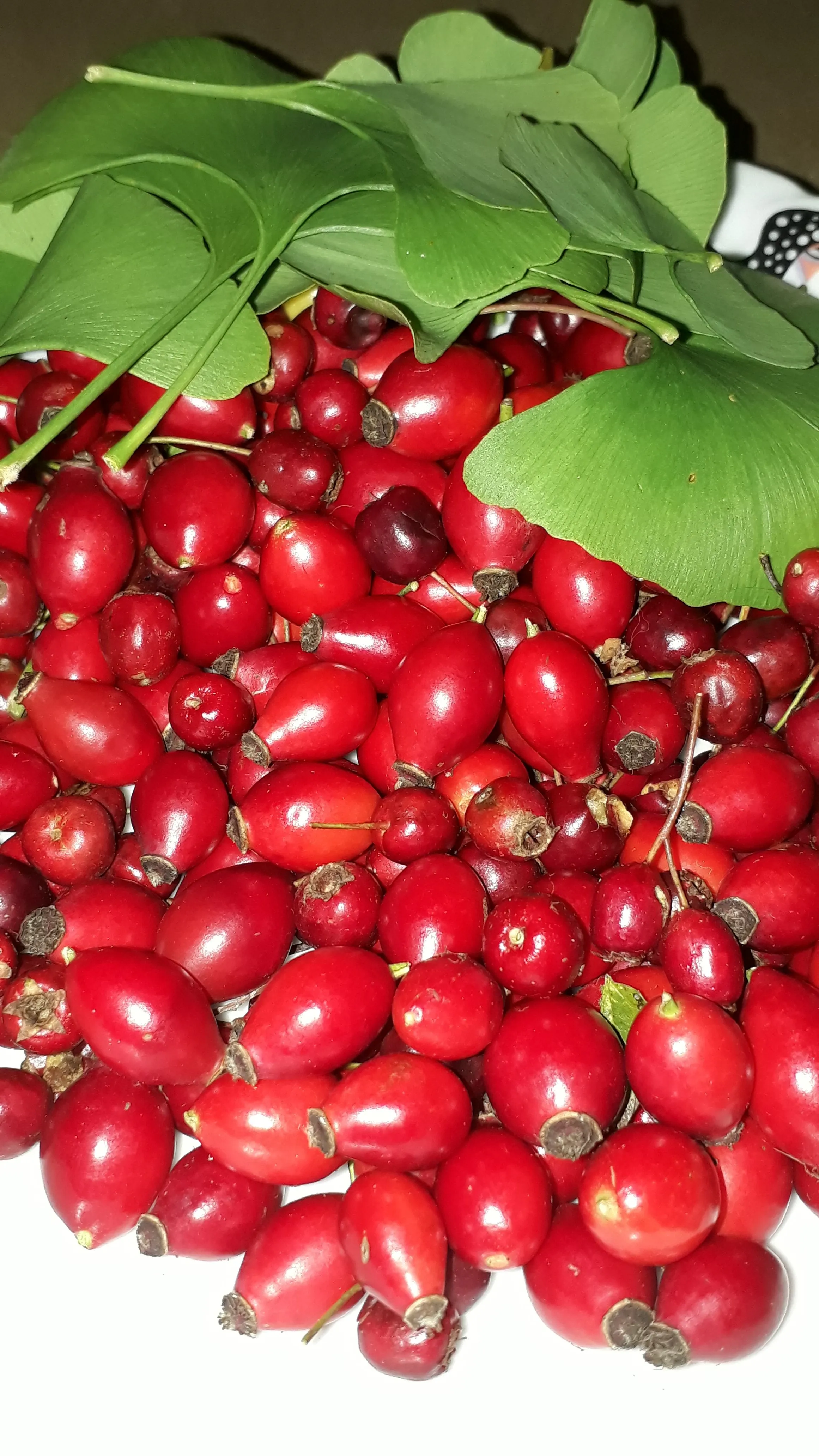🌸🌿 The Hidden Beauty of Wildflowers 🌸🌿
Today, we’re setting off on an enchanting journey to uncover the hidden beauty of wildflowers in our meadows. Imagine walking through a lush, sun-dappled field, where every step reveals a new burst of colour and delicate fragrance. 🌼🌱

Our adventure begins with a gentle stroll through the meadow, where wildflowers paint the landscape with their vibrant hues. From the dainty charm of the Meadowsweet to the cheerful presence of the Rosebay Willowherb, each flower has its own unique story to tell. Let’s take a closer look at some of these meadow marvels.
First up, we have the Meadowsweet (Filipendula ulmaria).
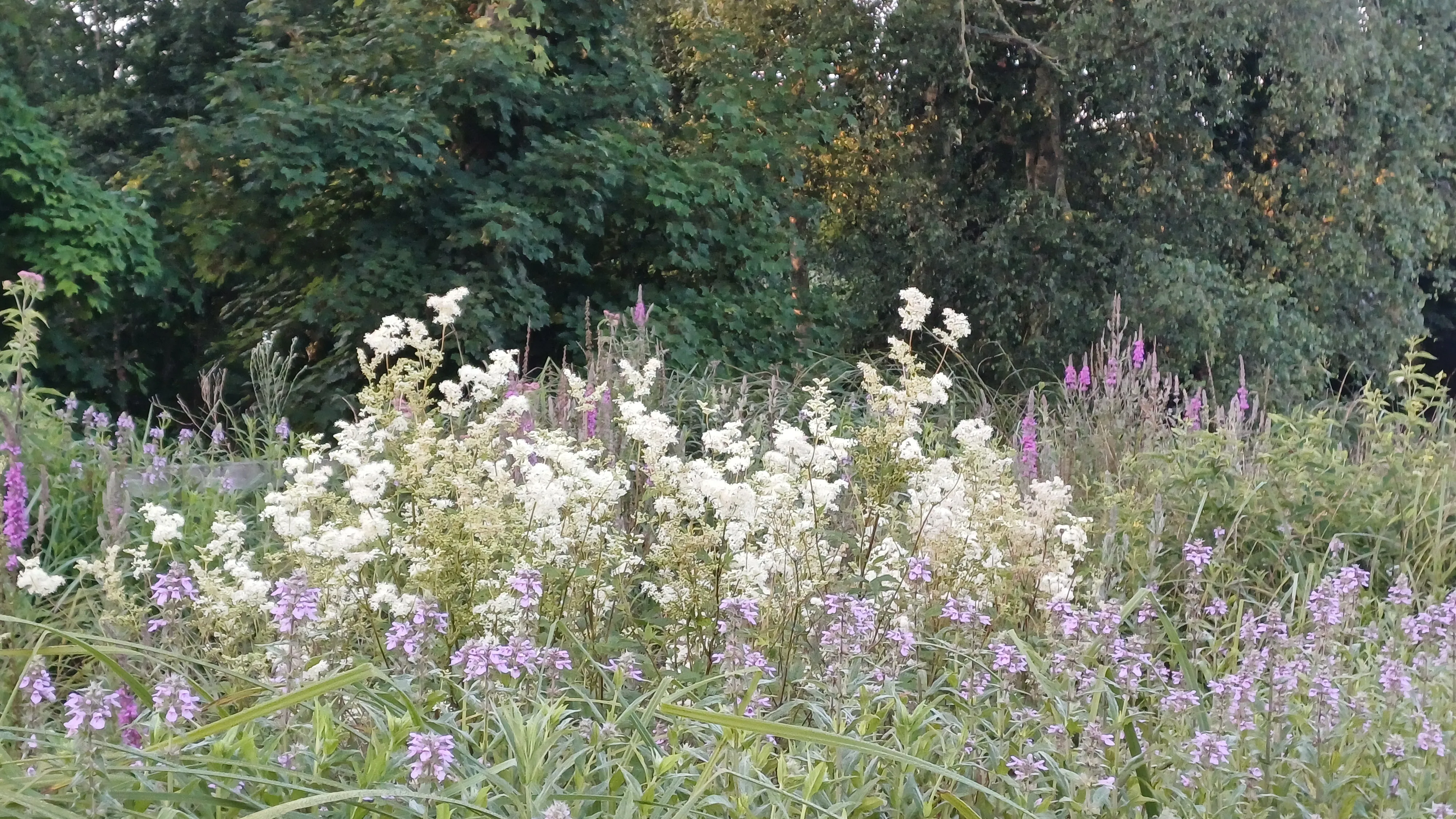
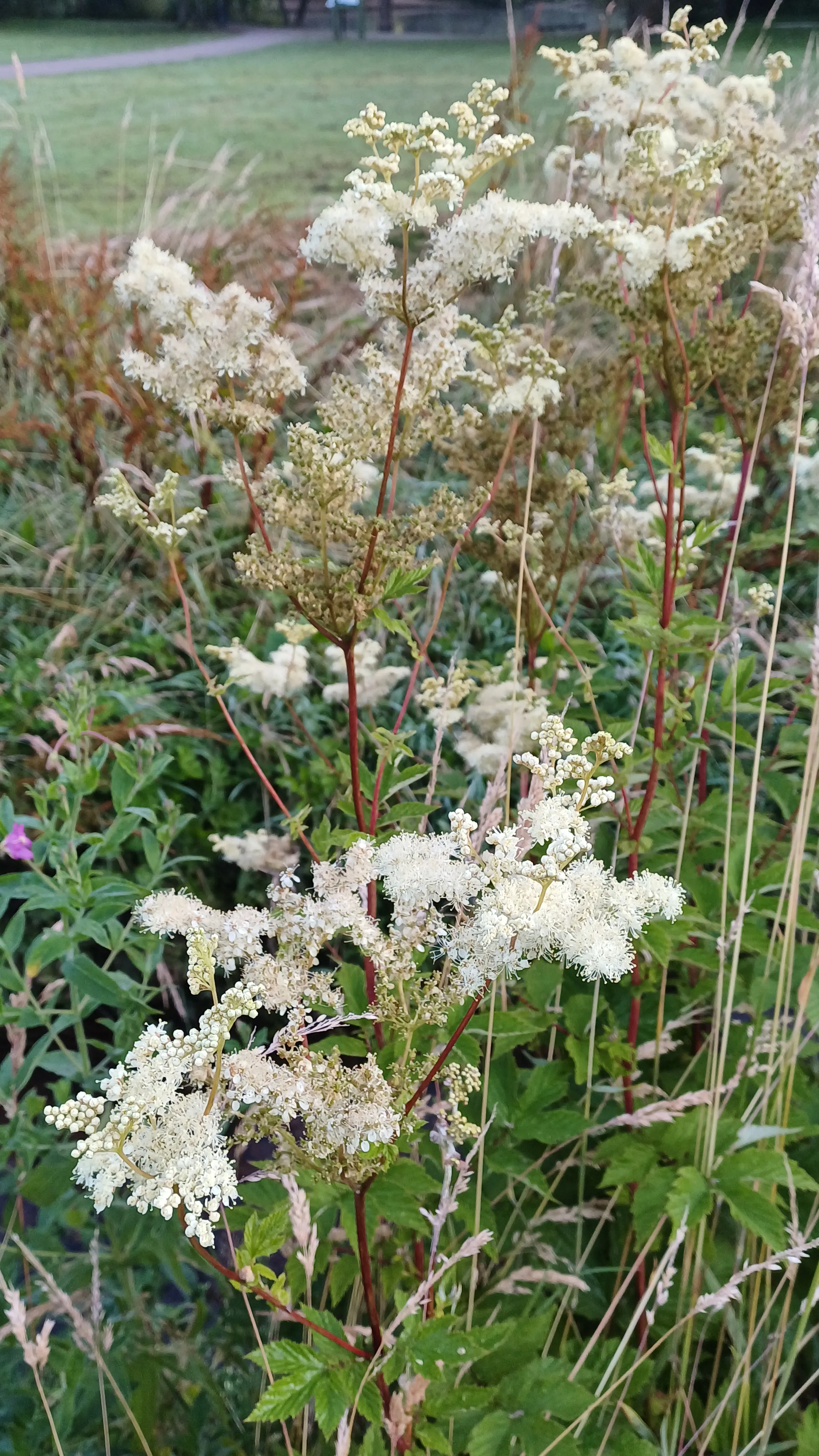
Known for its sweet fragrance and beautiful flowers, this herb has a rich history in traditional medicine. 🌸🍃 Used for centuries to relieve pain and inflammation, thanks to its natural salicylic acid (a precursor to aspirin). 🌿💊
Here are some wonderful ways to use the flowers:
1. Tea: Steep dried or fresh meadowsweet flowers in hot water to make a soothing herbal tea. This tea can help relieve headaches, reduce fever, and ease digestive discomfort. 🍵
2. Tincture: Create a tincture by soaking meadowsweet flowers in alcohol for several weeks. This concentrated form can be used for its anti-inflammatory and pain-relieving properties. 🌱💧
3. Infused Oil: Infuse meadowsweet flowers in a carrier oil (like olive or almond oil) for a few weeks. The resulting oil can be used for massages to help alleviate muscle pain and joint inflammation. 🌸🛢️
4. Salve: Combine meadowsweet-infused oil with beeswax to make a salve. This can be applied to the skin for soothing relief of aches and pains. 🌿🕯️
🌼🩺 However, a quick heads-up: if you're sensitive to aspirin or have certain medical conditions, it might be best to avoid Meadowsweet. Always good to know and be cautious! 🌱❗
Next, let’s admire the the stunning Rosebay Willowherb (Chamaenerion angustifolium), also known as Fireweed! 🌺🔥 Nature never ceases to amaze me with its vibrant colours and delicate beauty. 🌷✨. 🌺🦋

🌸🌿 Discover the Wonders of Rosebay Willowherb Flowers! 🌿🌸
Have you heard about the amazing uses of Rosebay Willowherb flowers? These vibrant blooms are not just stunning to look at, they have some incredible benefits too! 🌼💚

🌿 Health Benefits:
🌸 Anti-inflammatory: Rosebay Willowherb is known for its anti-inflammatory properties.
🍃 Antioxidant-Rich: These flowers are packed with antioxidants, helping to protect your body from free radicals.
🌼 Soothing: They can help soothe irritated skin and support overall skin health.
🍴 Culinary and Herbal Uses:
- Tea: Brew the flowers into a calming and soothing tea.
- Salads: Add the petals to your salads for a burst of colour and a mild, sweet flavour.
- Jams and Jellies: These flowers make delightful and flavourful jams or jellies.
- Oil Infusion: This time, I'm trying an oil infusion with Rosebay Willowherb flowers for cooking. It's perfect for adding a unique and delicious flavour to various dishes.
Oil-Infused Rosebay Willowherb Flowers Below 📸👇
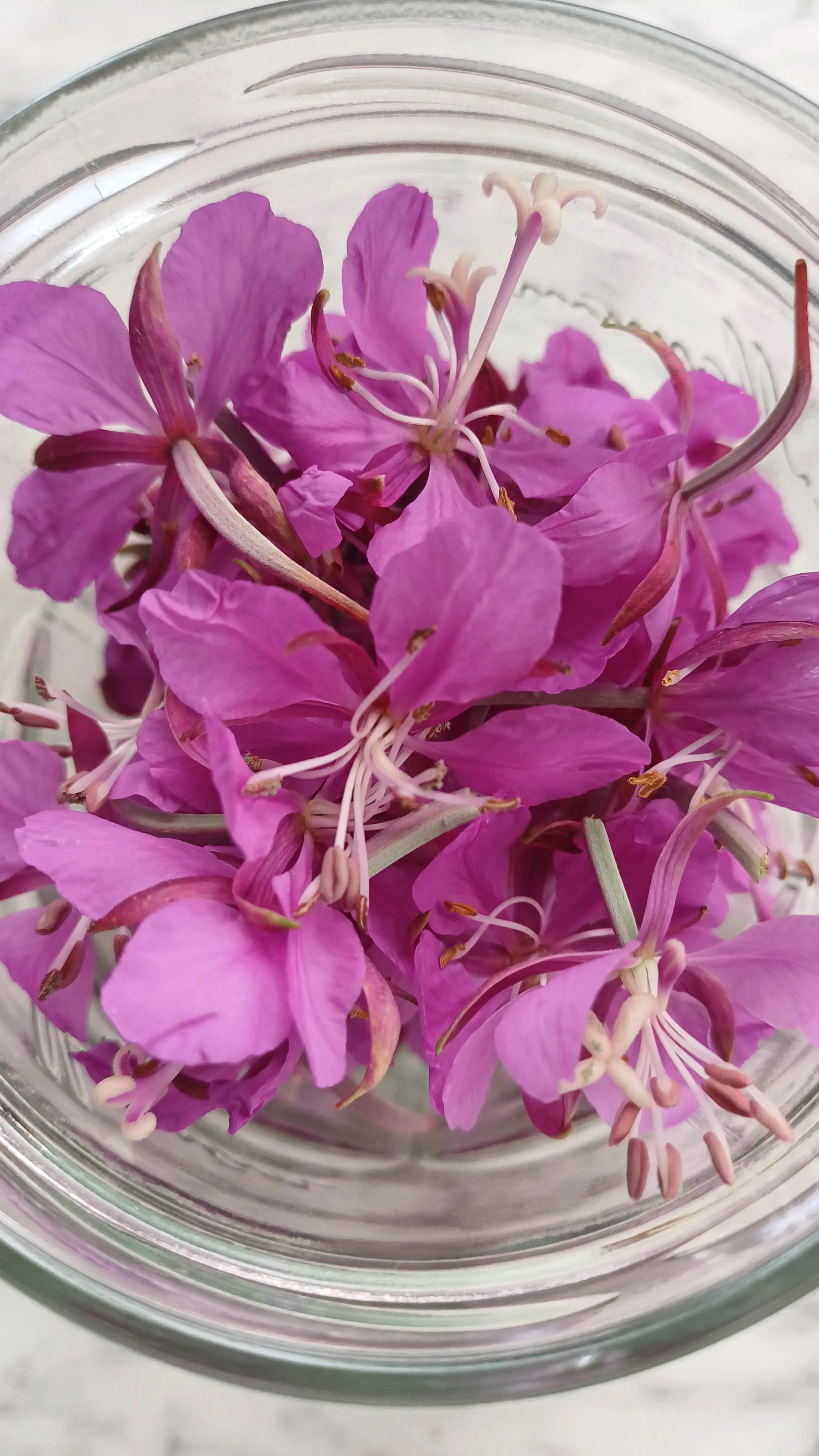
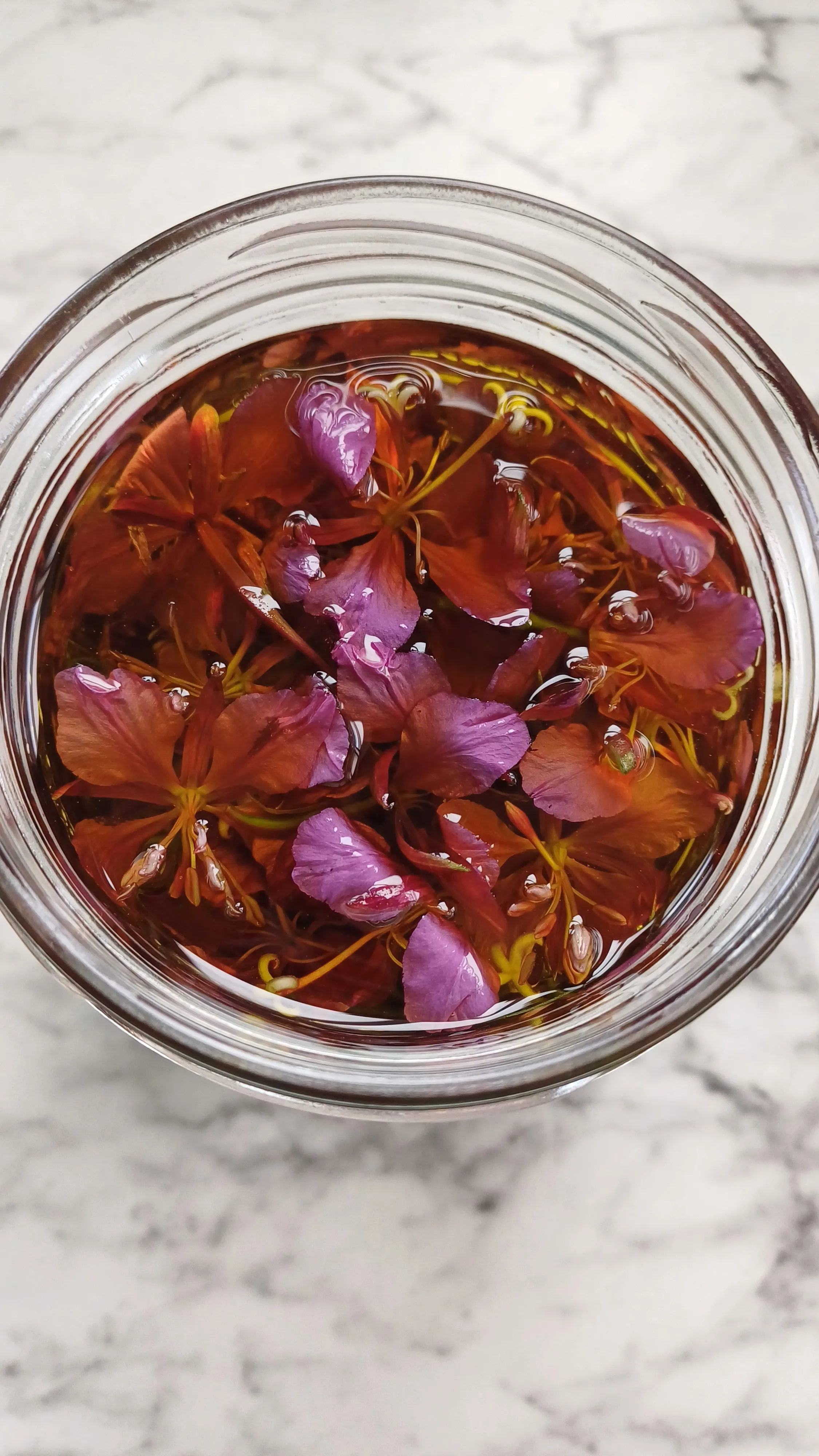
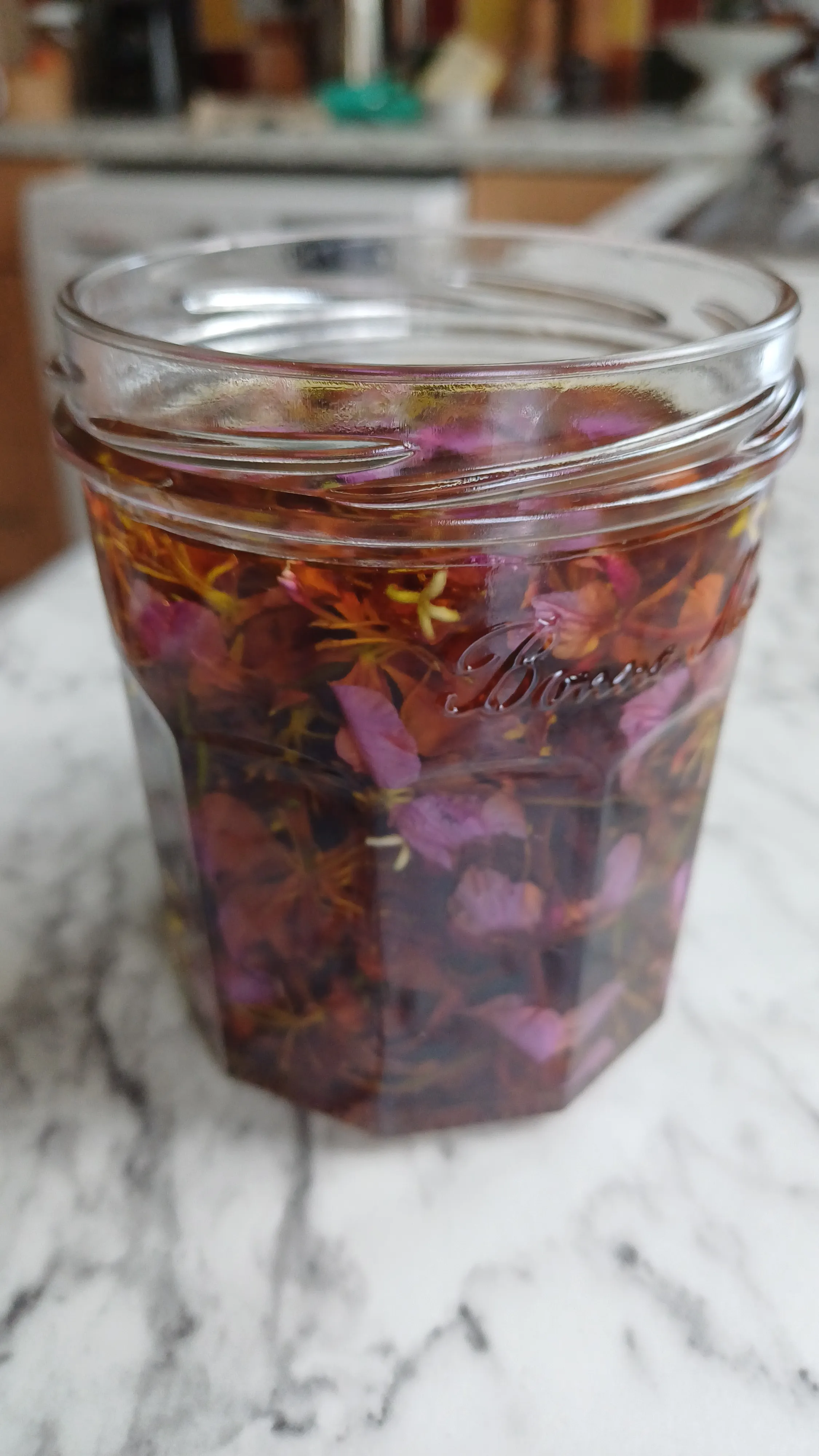
🌸🌿 Bring a touch of beauty and health to your meals with Rosebay Willowherb flowers! Have fun experimenting in the kitchen and enjoy the benefits of this garden gem. 💚🌼
If you're curious about foraging fireweed, from edible shoots to vibrant flowers, you're in the right place! 🌿🌸 I've explored it all, from harvesting stem pith to enjoying the blooms. If you prefer watching videos, check out the ones below to see it all in action. Happy foraging! 👩🌾🎥
Now, let’s not forget the Red Clover (Trifolium pratense). With its vibrant pink blooms and trifoliate leaves, it’s a favourite among pollinators. The red clover is not only a feast for the eyes but also plays a vital role in the ecosystem by enriching the soil. 🌿🐝

💗 Red Clover 💗
- Supports a healthy immune system 🛡️
- Great for skin health and soothing irritations 🌟
- Can be used in teas for its calming properties 🍵
- Beneficial for female health, especially during menopause and menstrual cycles 🌸
Its rich content of vitamins and minerals makes it a valuable addition to herbal remedies. 🌸💪
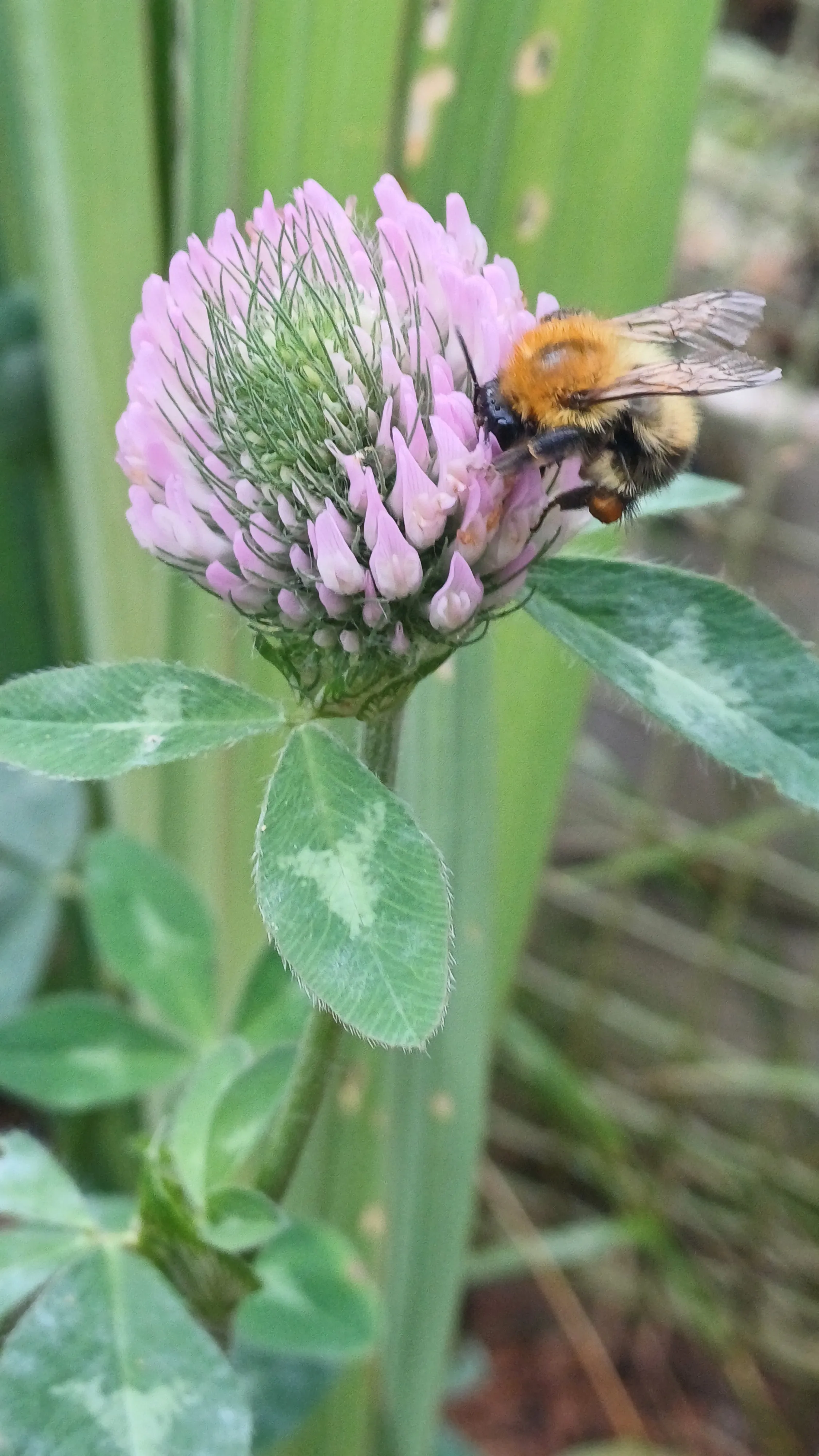
As we continue our exploration, we’ll encounter the Ragwort (Senecio jacobaea), whose golden petals seem to capture the very essence of summer. It’s often found in open areas, adding a cheerful splash of yellow to the landscape. 🌟
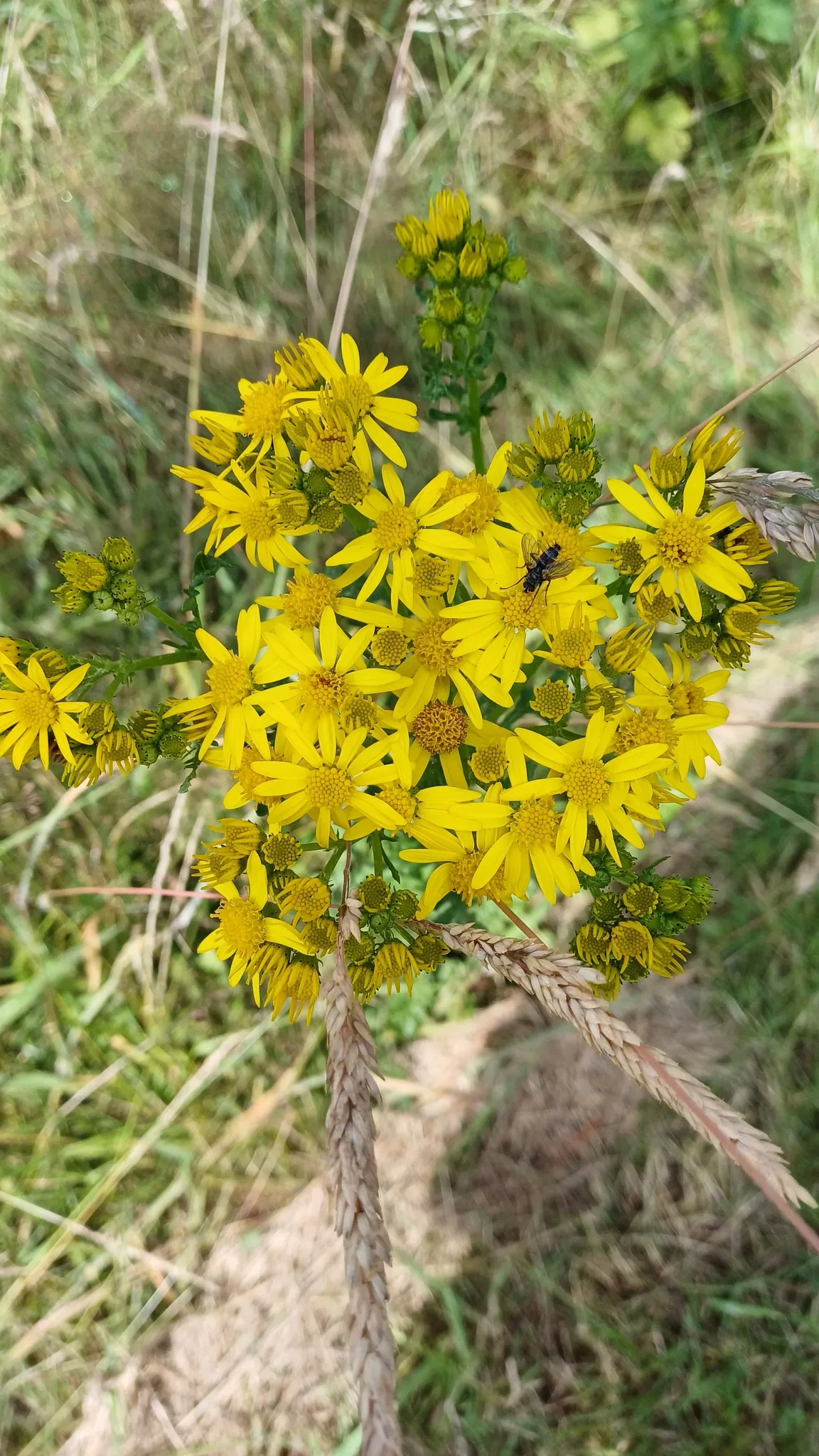
🌿 𝐑𝐚𝐠𝐰𝐨𝐫𝐭: 𝐍𝐚𝐭𝐮𝐫𝐞’𝐬 𝐔𝐧𝐢𝐪𝐮𝐞 𝐏𝐥𝐚𝐧𝐭 𝐚𝐧𝐝 𝐈𝐭𝐬 𝐔𝐬𝐞𝐬 🦋
Ragwort (Jacobaea vulgaris) is often seen as a troublesome weed, but this resilient plant plays several important roles in nature. Despite its reputation, ragwort has fascinating uses and benefits that make it a valuable part of our ecosystem.
🌼 Uses in Nature
1. Habitat for Wildlife: Ragwort is a crucial plant for various species, particularly insects. The vibrant yellow flowers are an essential food source for a range of pollinators, including bees and butterflies. Notably, the Cinnabar moth relies on ragwort as its primary host plant.
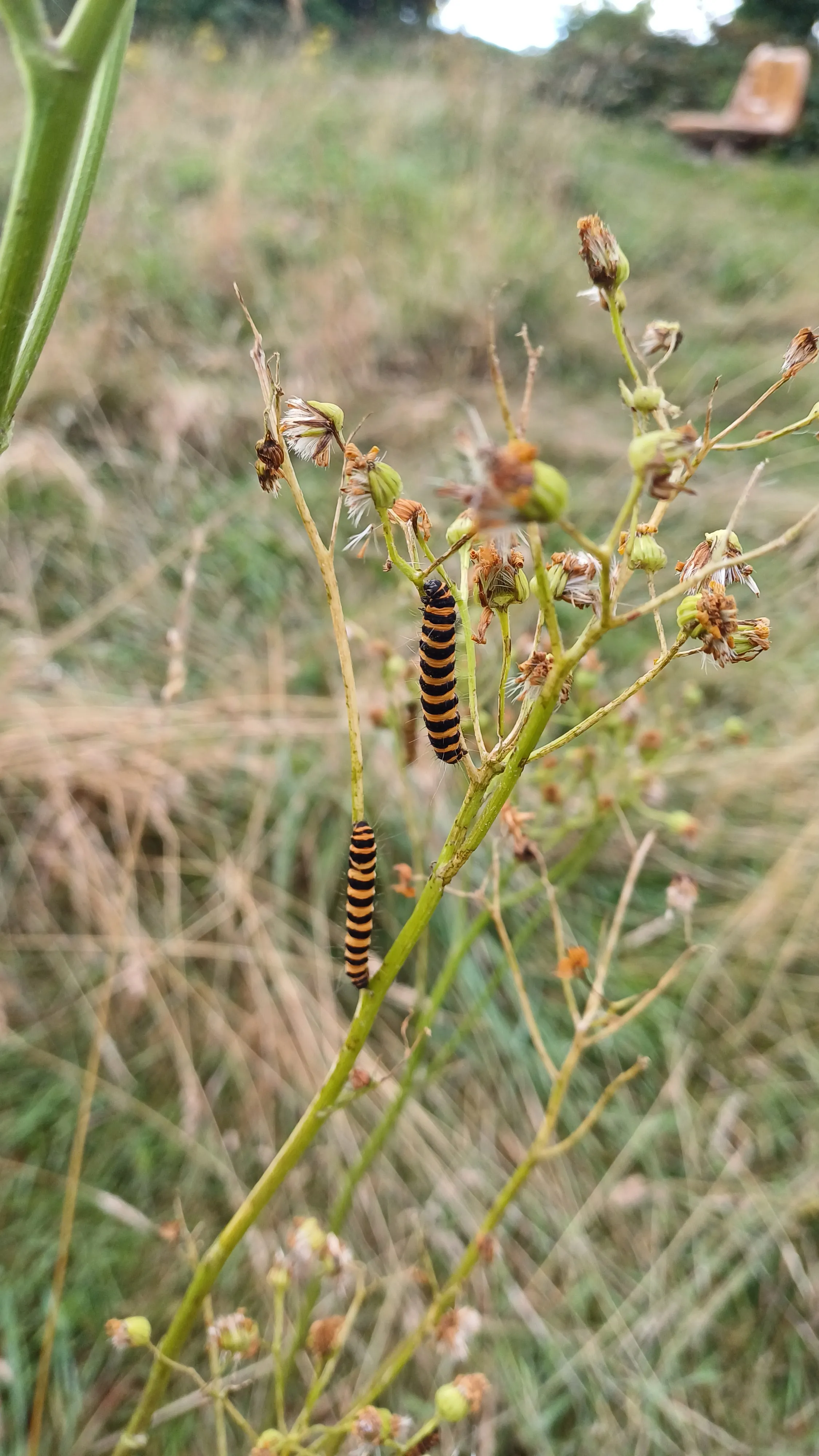
2. Support for Pollinators: The nectar and pollen from ragwort flowers attract numerous beneficial insects. This makes it an important plant for maintaining healthy pollinator populations, which are vital for the health of our ecosystems and agriculture.
3. Soil Improvement: Ragwort can help improve soil health. It is a nitrogen-fixing plant, which means it can enhance soil fertility by converting atmospheric nitrogen into a form that plants can use. This contributes to a more balanced and nutrient-rich soil environment.
⚠️ Poisoning Risks ⚠️
While ragwort has its ecological benefits, it is important to be aware of its potential hazards. Ragwort contains toxic alkaloids that can be harmful if ingested. This is particularly concerning for livestock, as consumption of ragwort can lead to poisoning, causing symptoms such as liver damage, jaundice, and even death in severe cases. Farmers and animal keepers should be cautious and manage ragwort populations to prevent livestock from consuming it.
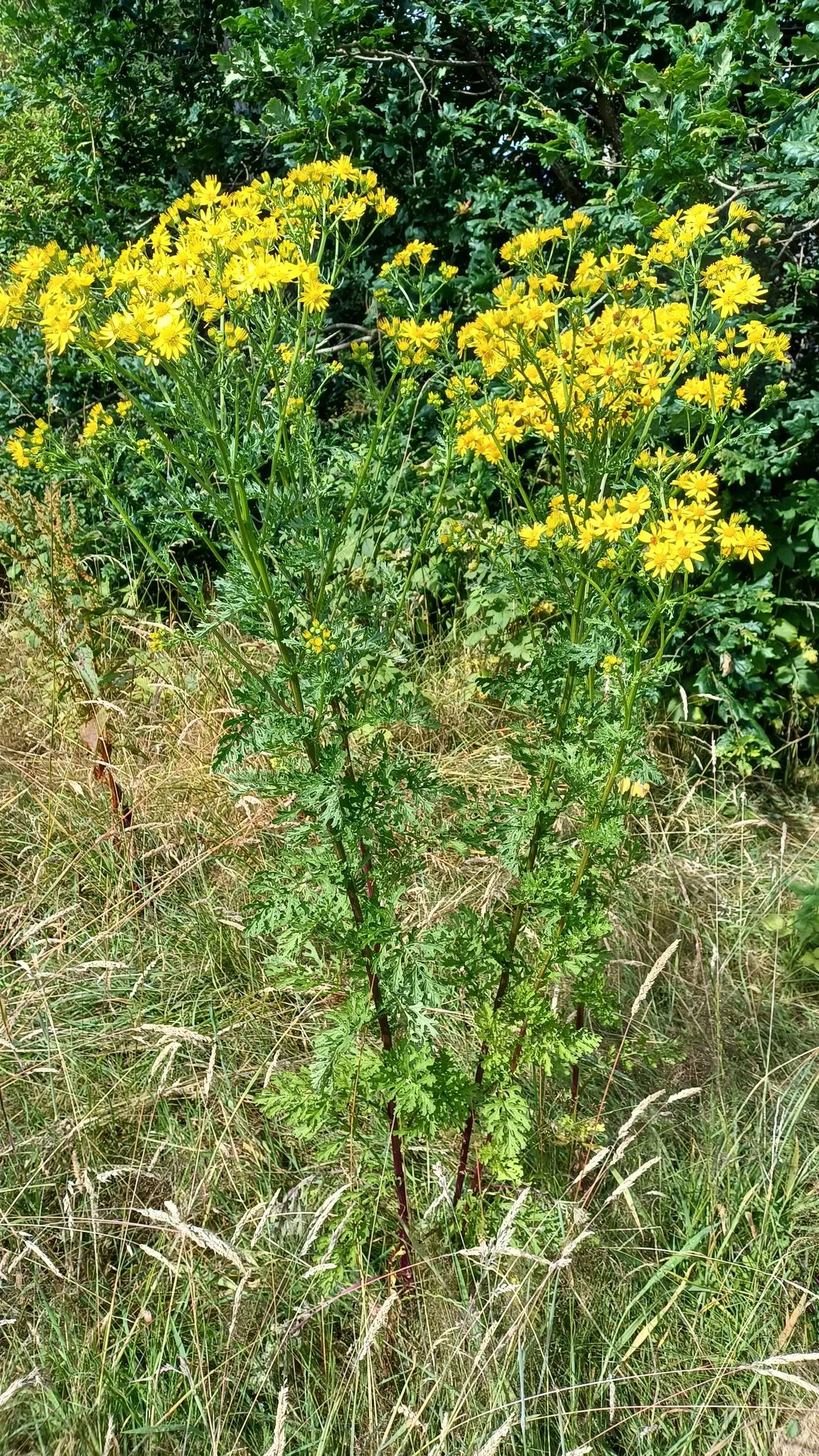
🌿 Ragwort may be viewed as a nuisance by some, but it plays a vital role in many ecosystems. Its significance as a habitat for the Cinnabar moth and other pollinators, along with its benefits to soil health, highlights its importance in nature. However, it is also crucial to manage its growth responsibly to mitigate the risks of poisoning to livestock.
🌼🦋 Have you observed ragwort in your area or noticed its impact on local wildlife? Share your thoughts and experiences in the comments below!
💧🌿 And then, let’s take a moment to appreciate the Water Mint (Mentha aquatica)! Its elegant flowers create a dreamy blue colour, evoking a sense of tranquillity and wonder. 💙🌳
This lovely, refreshing plant thrives in damp habitats like riverbanks, marshes, and wet meadows. It not only adds a touch of green beauty but also offers a multitude of uses that you might find surprising. 🌱✨
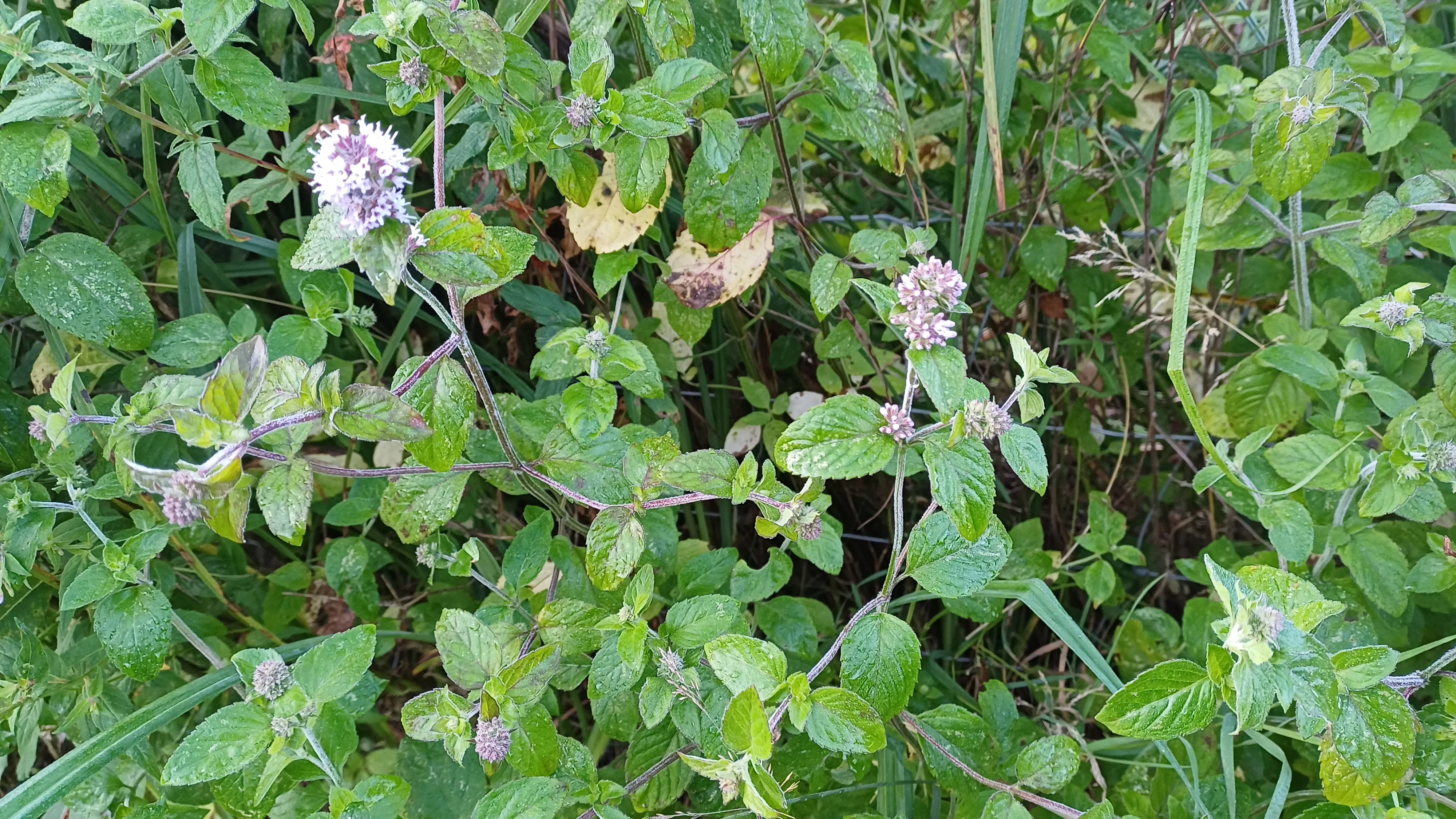
💧 Water Mint Uses 💧
- Culinary Delight: Adds a fresh, minty flavour to salads, drinks, and desserts. Perfect for summer recipes! 🍹🥗
- Herbal Teas: Brew its leaves for a soothing, aromatic tea that's great for digestion and relaxation. 🍵
- Aromatherapy: The invigorating scent can be used in diffusers or homemade potpourri for a refreshing aroma in your home. 🌿💨
- Skin Care: Its natural properties make it great for soothing skin irritations and adding to homemade skincare products. 🧴✨
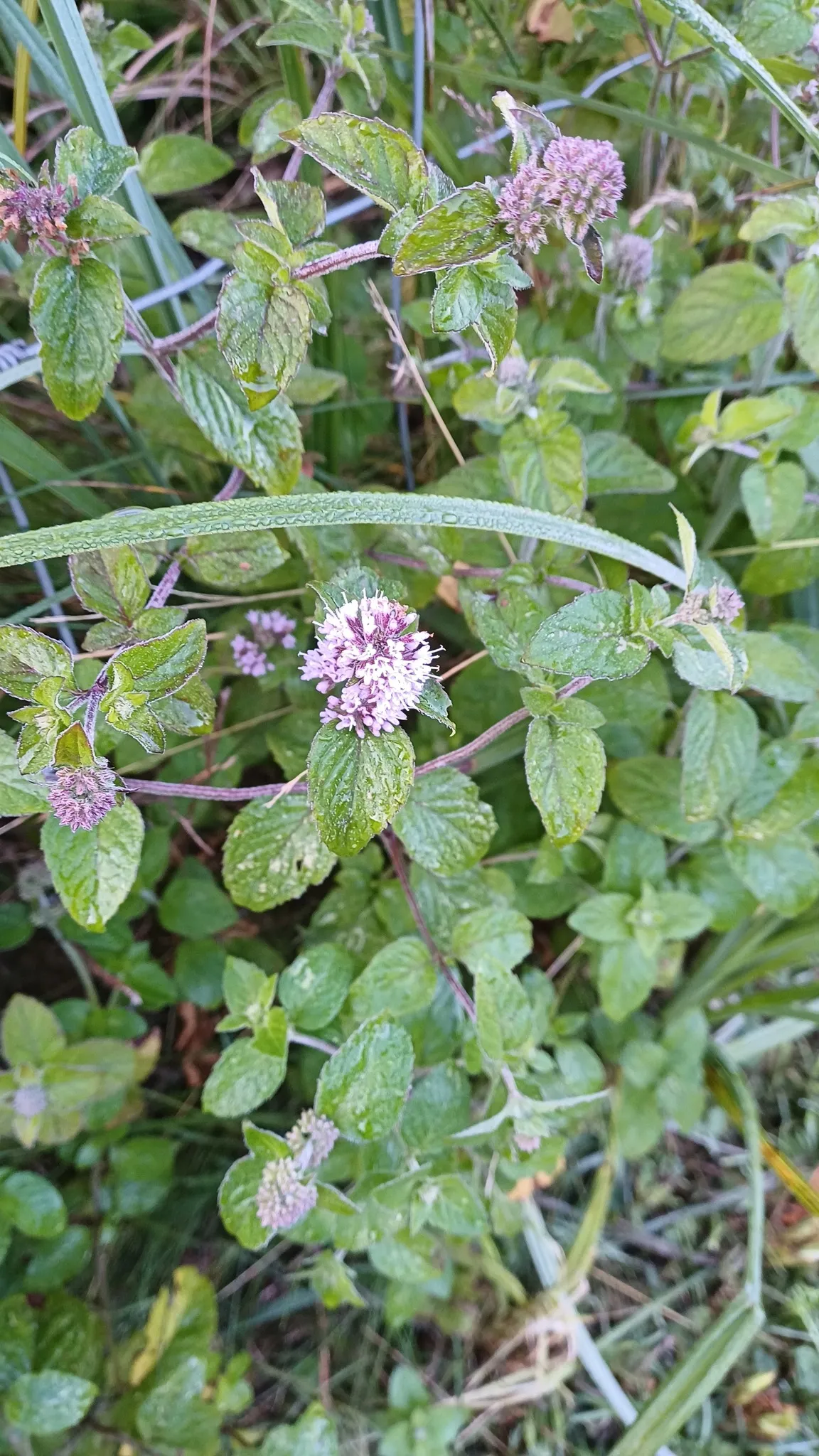
💦 Keep an eye out for this versatile herb next time you're near water! 💦
Have you ever used water mint in your recipes or remedies? Share your experiences below! ⬇️😊
✨🌿Let's check wonderful Angelica (Angelica archangelica)!
Angelica is a striking herb often found in moist, shaded areas such as riverbanks, damp meadows, and woodland edges. With its tall, umbrella-like clusters of flowers, it’s both beautiful and beneficial. 🌸💧
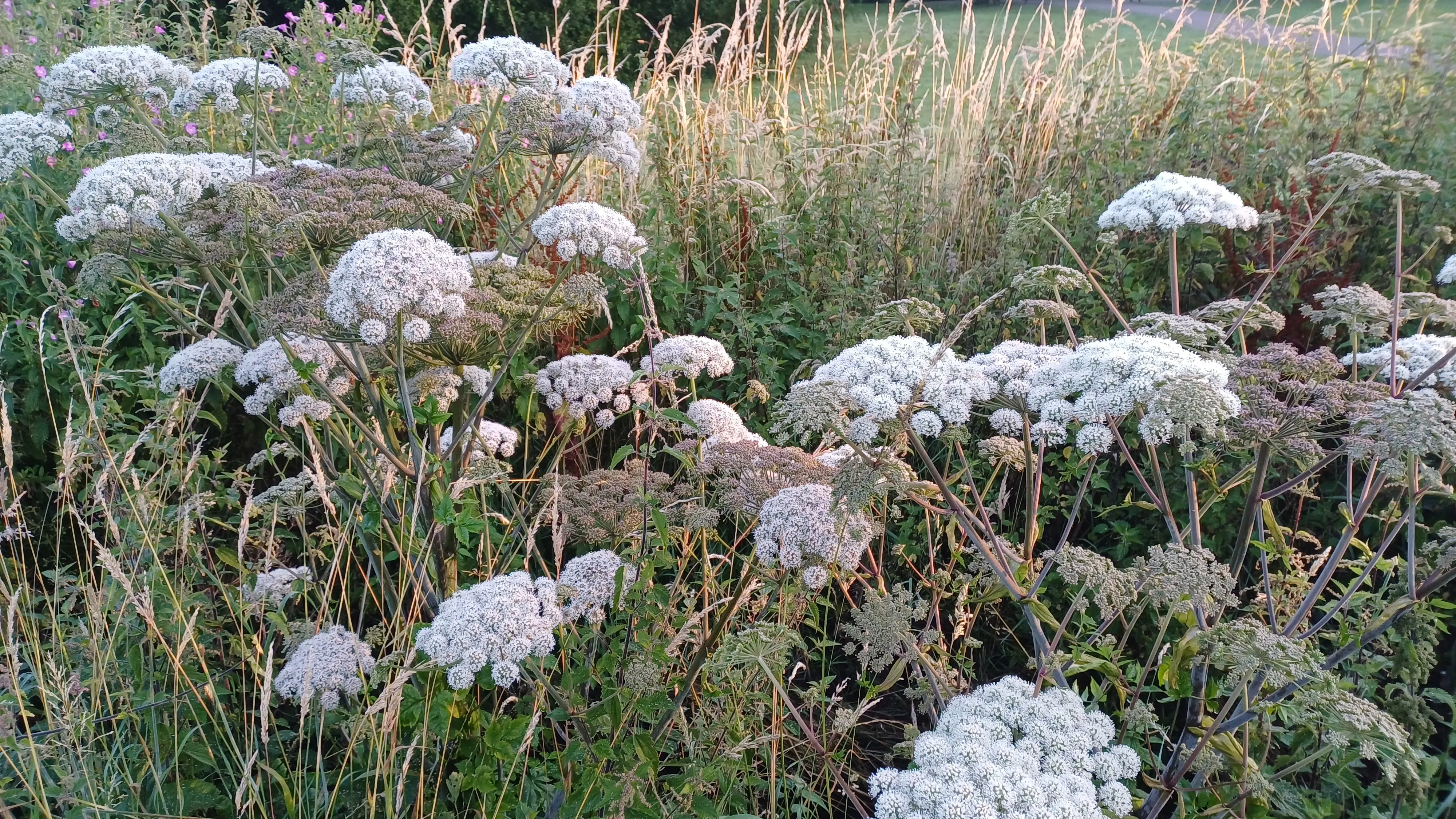
👼 Angelica Uses 👼
- Culinary: The stems and roots can be used to flavour liqueurs, sweets, and desserts, adding a unique, aromatic taste. 🍬🍸
- Herbal Teas: Its roots and seeds can be brewed into a tea known for aiding digestion and soothing respiratory issues. 🍵
- Natural Remedies: Traditionally used to support digestive health, improve circulation, and relieve stress. 🌿✨
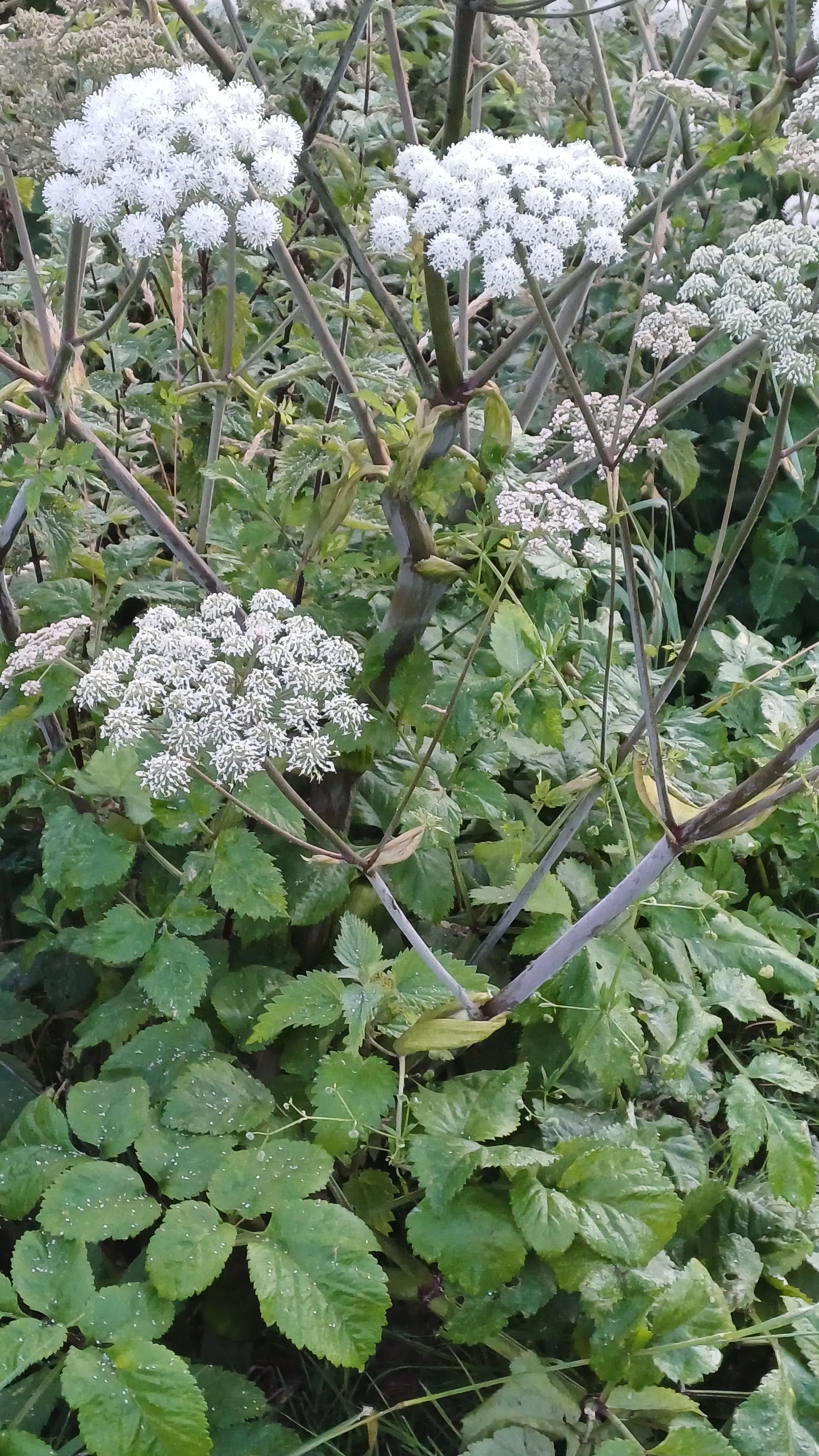
⚠️ Caution ⚠️
- Angelica can increase sensitivity to sunlight, so be mindful if you’re using it topically or consuming it regularly. 🚫☀️
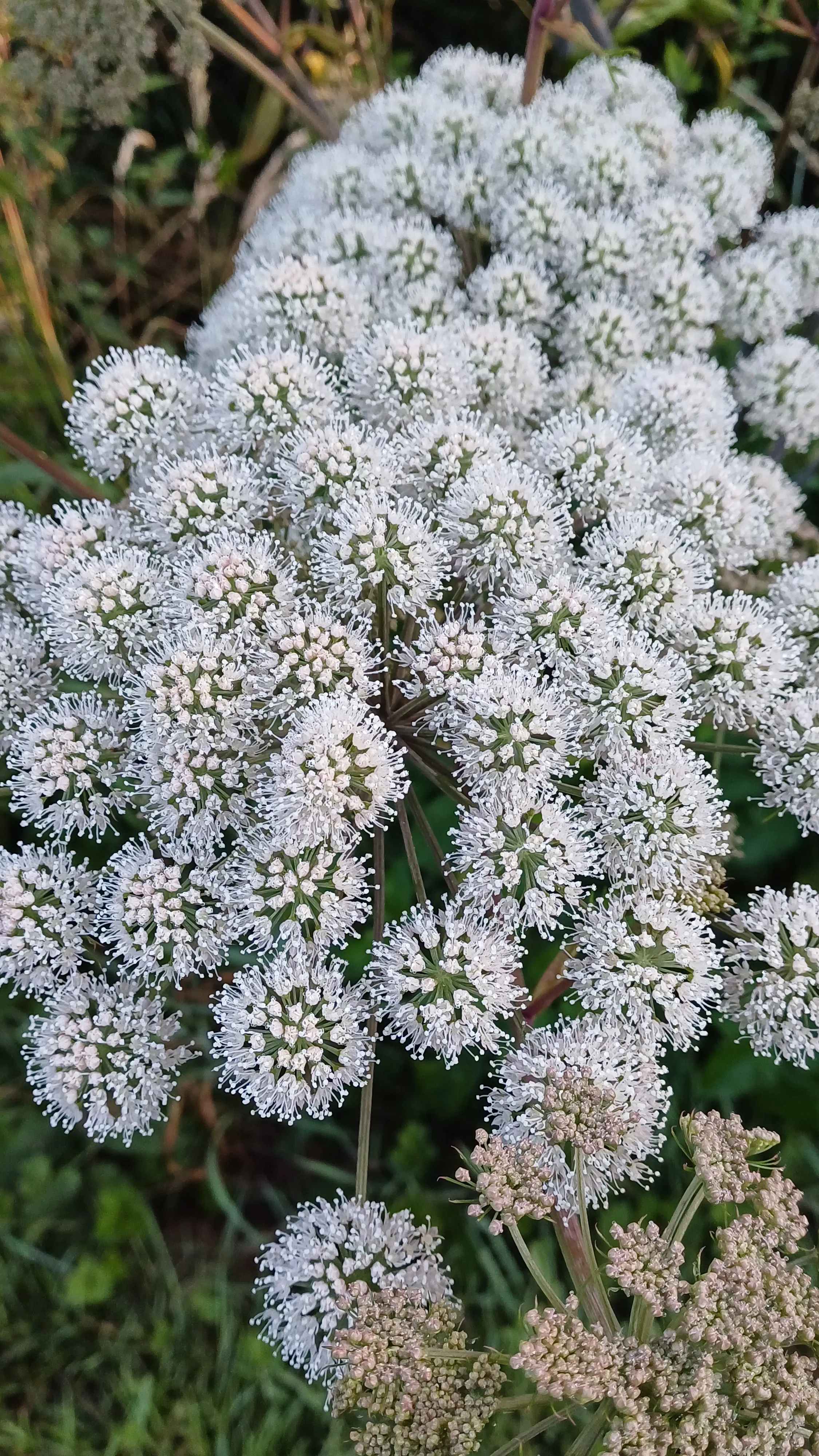
Nature's pharmacy is truly amazing! Have you come across angelica or used it in any recipes or remedies? Share your experiences below! ⬇️😊
And finally let's explore the beauty of Chicory (Cichorium intybus).
💙 Have you noticed the stunning blue flowers of chicory blooming in your area? This remarkable plant is not just visually striking but also offers a range of benefits and uses.
🌸 What is Chicory?
Chicory is a perennial herb known for its bright blue, daisy-like flowers and deeply lobed leaves. It often grows wild along roadsides and in meadows but can also be cultivated in gardens for its beauty and utility.
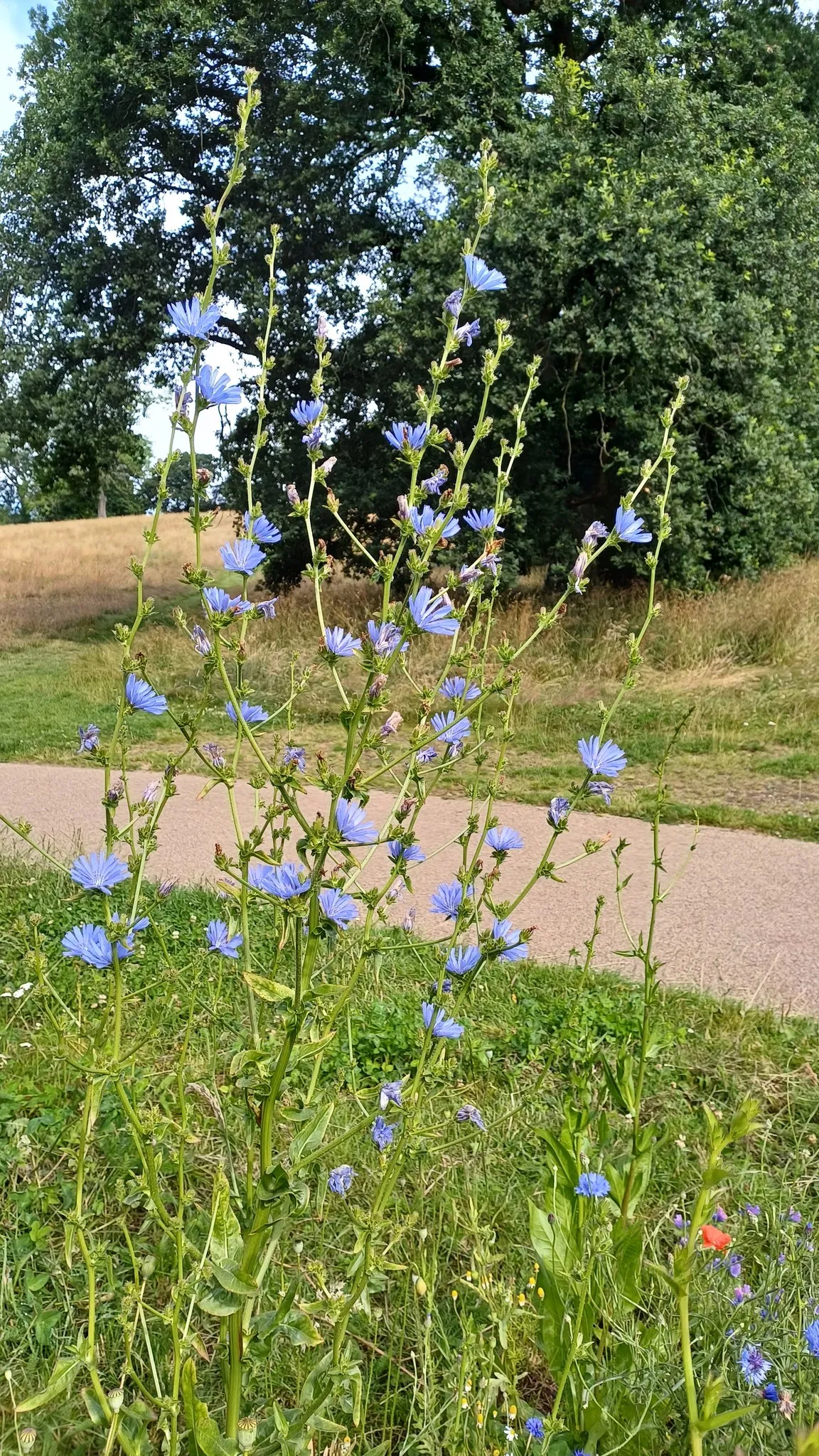
🍃 Uses and Benefits:
1. Culinary Uses: Chicory leaves are perfect for adding a unique, slightly bitter flavour to salads. The roots can be roasted and ground to create a coffee substitute or additive, ideal for those looking to cut down on caffeine.
2. Health Benefits: Chicory is packed with antioxidants, vitamins, and minerals. It’s known to aid digestion, support liver health, and reduce inflammation.
3. Herbal Medicine: Traditionally, chicory roots are used in herbal remedies to help manage digestive issues and boost appetite.
4. Attracts Pollinators: Chicory flowers are a favourite among bees and butterflies, making them a wonderful addition to any garden aimed at supporting local pollinators.
🌱 Grow Chicory in Your Garden! 🌱
Chicory is easy to grow and adapts well to various soil conditions. Whether you’re interested in its beautiful blue blooms, its culinary versatility, or its role in supporting wildlife, chicory is a plant worth growing.
Have you spotted chicory in bloom or used it in your garden or kitchen? Share your thoughts and experiences in the comments below! 🌼🌿
As we meander through this tapestry of wildflowers, take a moment to breathe in the sweet, earthy scents and listen to the gentle whispers of the meadow. Each flower is a testament to nature’s artistry, and together, they create a symphony of beauty that’s both calming and uplifting.

Thank you for joining me on this delightful journey through the wildflowers of the meadow. Remember, the next time you’re in a meadow, take a closer look and let the whispers of the wildflowers reveal their secrets to you.
As you leave the meadow, carry with you the quiet magic of its wildflowers and the possibility of fairies 🧚♀️🧚♀️🧚♀️ dancing unseen among the blooms. Let their subtle charm inspire your days and remind you of the hidden wonders that nature holds. Until our next journey, may you find enchantment in every step and beauty in every moment. 🌸🌾🌟

I hope it inspires you.🥰 Happy exploring!🚶♀️🚶♂️
From my heart ❤️ to your heart.❤️


